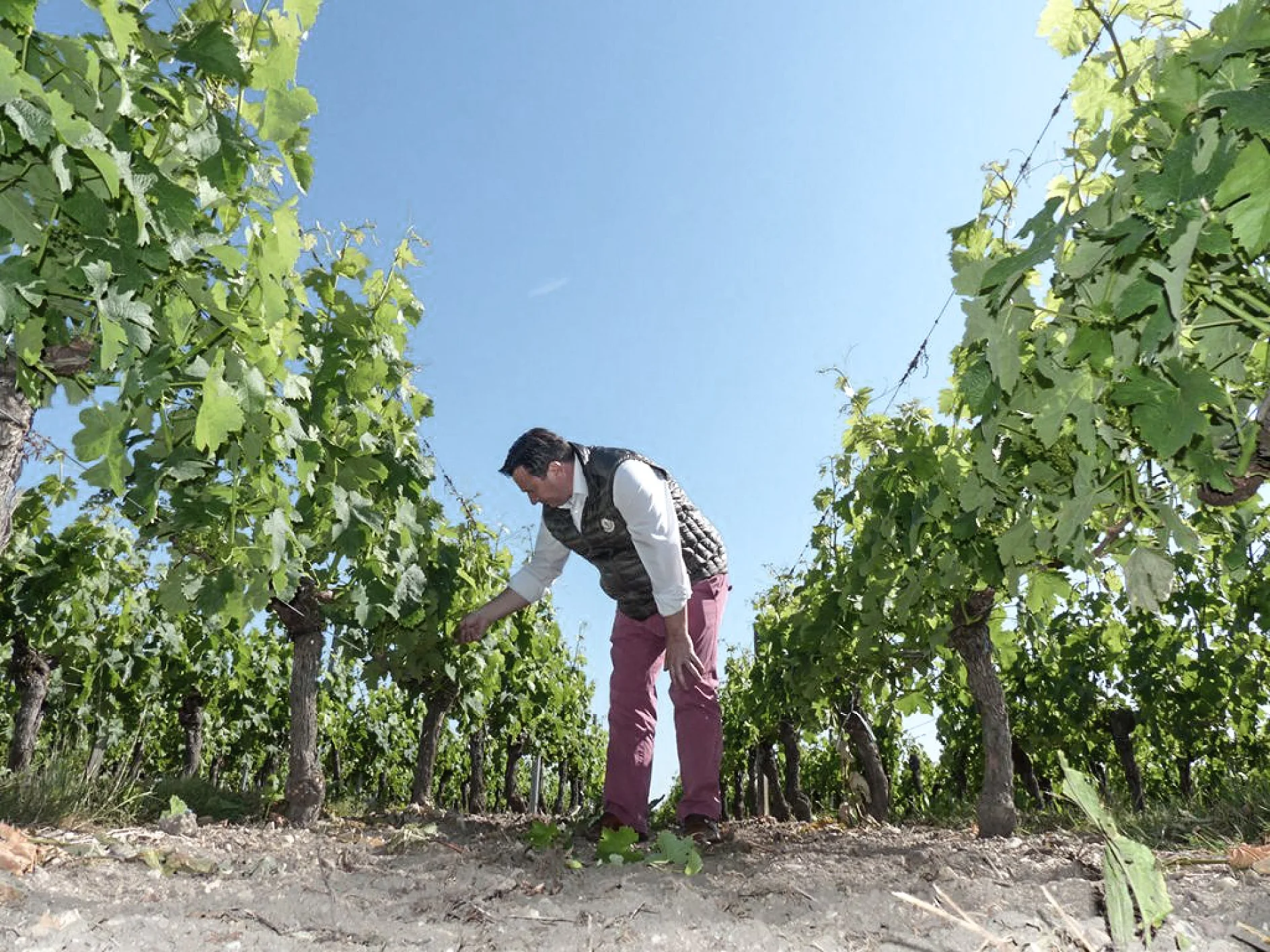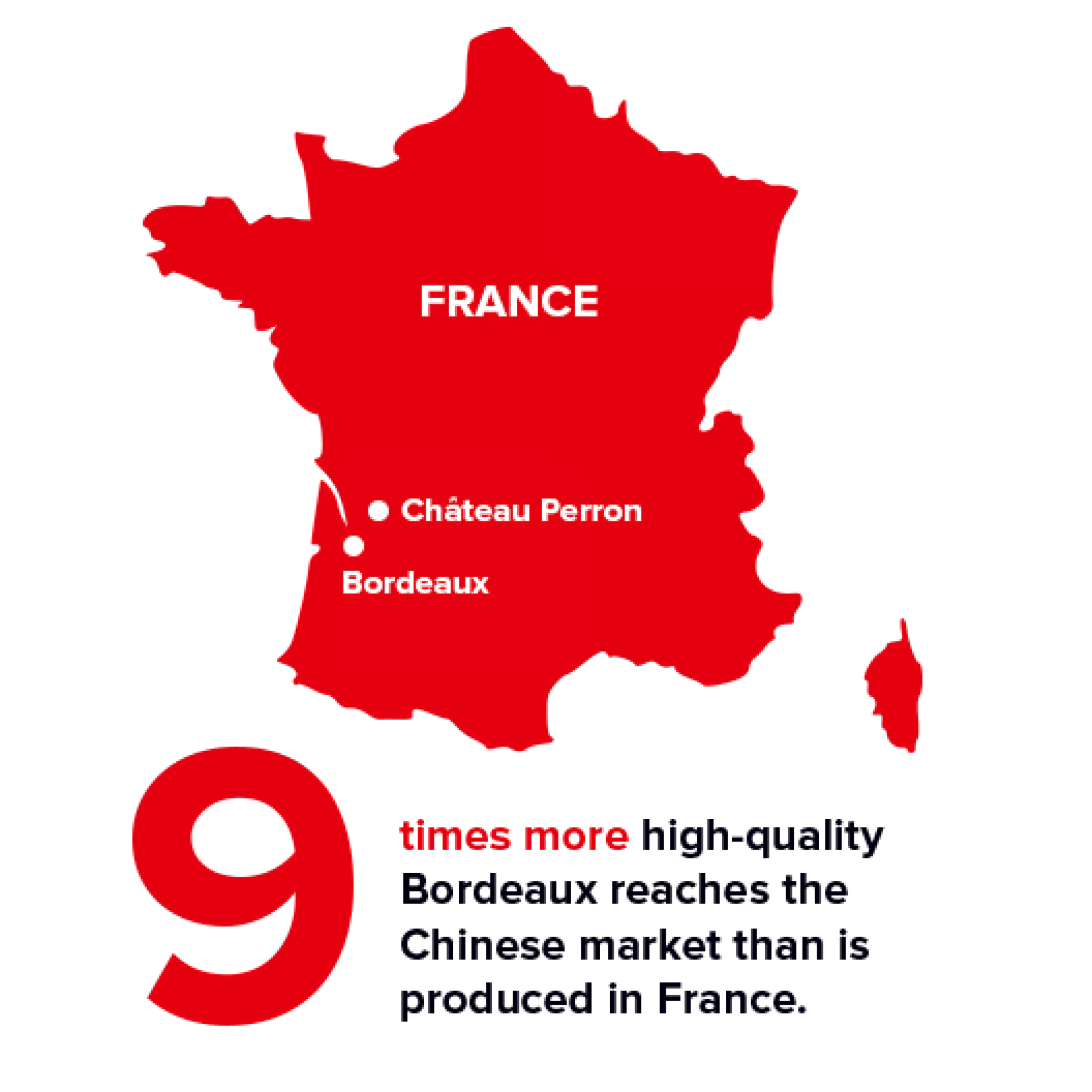Martin Luther once said: “Beer is a work of men, wine is of divine nature.” However, wine counterfeiters are not afraid to tamper with nature. For example: In China, about two-thirds of all wines sold are alleged counterfeits. “I export about 70% of my wines abroad,” says winemaker Bertrand Massonie from southern France. “Especially in the Asian markets, wine counterfeiting and so-called ‘re-filling’ is an issue that threatens the reputation and profitability of wineries – a phenomenon that we are therefore fighting.”
Vinum & Veritas
Markets
A touch of licorice, silky texture, fine cherry flavor – the words of wine connoisseurs sound truly beautiful. However, the fermented grape juice does not always keep what these words promise: Not even wines are safe from counterfeiting.
Sherlock Holmes at the bottle neck
Massonie is the owner of the Château Perron in the Département Gironde. The area is home to the world-famous Bordeaux wines. 22 years ago, Massonie took over the winery of his parents in the third generation. He was one of the first among approximately 300 wineries from the Bordelais region (the area around Bordeaux), who today use the tesa scribos® counterfeit protection. Since 2014, he equips his wine bottles with security labels from Heidelberg. A decision with vision.

© Bertrand Massonie
Given the dynamics of the market and the fact that even among wine experts there are hardly any “objective” criteria for what is a “good” wine, wine marketing is becoming ever more important. Therefore, apart from counterfeit protection, the integrated possibilities of customer interaction as well as Track&Trace services were particularly attractive features for Massonie. “If you scan the QR code, you may join our Facebook group, subscribe to the newsletter and find reliable suppliers,” says the 46-year-old. The Chinese customers, he adds, are especially receptive to this kind of options.

The begin of a friendship
(A Bordeaux vineyard in the Gironde region at the confluence of the Garonne and Dordogne rivers, stretching as far as the Atlantic Ocean in the Bay of Biscay.)
© Shutterstock
Let’s imagine Vincent W. at the wine store. He pulls out his smartphone. Tonight, he wants to serve a good red wine to his friends. The Château Perron he has envisaged has a security label on the bottle neck, and Vincent W. scans the QR code. Thus, he is forwarded to the authentication page and learns everything about the origin of the wine, its taste and character. At the same time, Bertrand Massonie learns when and where his wine was in demand. Voilà! Vincent and the winemaker have come together – and that could be the beginning of a long friendship.
"Without the interactive features of the tesa scribos® security labels, I could hardly know that many Chinese are buying my wines while traveling through Dubai."
Winemaker and owner of Château Perron
Scan – See – Become Visible
This is how the tesa scribos® safety label works: Every single bottle receives a unique and non-replicable code. The code is implemented at several security levels and secured by visible as well as invisible graphic effects. By scanning the QR code on the bottle neck with a smartphone, the buyer is guided through a simple, intuitive authentication process. He or she will find out how to check the label or the coding on the label.
© tesa
Scan and profit: By reading the tesa scribos® label, after product authentication, wine lovers may be invited to participate in competitions, surveys and bonus programs. This deepens the relationship between winemakers and buyers.
Read more about tesa scribos
on our website